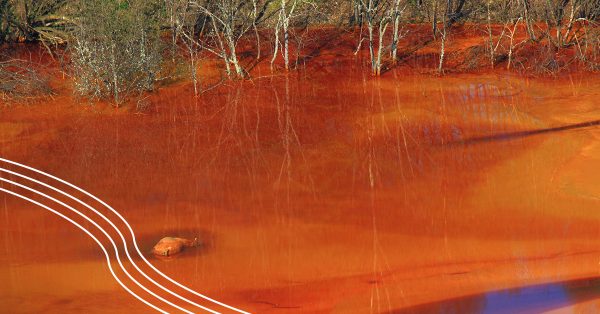Over 20 years ago, Montana won the fight against environmentally destructive cyanide gold mining by banning the use of cyanide at open pit mines. But the 1998 law wasn’t enough, as a second law was proposed to prevent permanent acid mine drainage that persisted after the ban. This time though, Montana lost the fight.
1979 marked the year Pegasus Explorations Ltd began cyanide heap leach gold mining in the Little Rocky Mountains in the state of Montana. The mines operated by digging up large parts of the land, dumping them on a leach pad, and showering it with cyanide. The companies were able to collect the gold that leached out of the bottom. The method was cost effective and highly efficient, and was able to process the low grade ore of the area. Cyanide mining turned some of the lowest grade ore around into Montana’s biggest gold mine.
Barely a decade after the mining operations began, people realized something was amiss. The leach pads would frequently spring leaks that caused cyanide to escape. The nearby creeks, groundwater and wells would be contaminated as a result. 51 leaks had been documented since 1982. The damage had been done. The town of Zortman had to change their water sources due to it being polluted with cyanide. The nearby Ruby Gulch was contaminated with toxic heavy metals. There were also two Indian tribes furious that their children were being poisoned by a leak from their “Spirit Mountain”.
In 1998, the people of Montana voted for cyanide to be banned. The law i-137 would do away with the cyanide heap leach mining plaguing the people of Montana. The proponents of the initiative won 53% of the vote, a historic victory for the environmental activists in America. It was hard to argue against the ban when the mines’ history of spills, leaks, and widespread environmental destruction spoke for itself.
Fast forward to today, people have discovered that simply banning cyanide was not enough. After Pegasus Gold went bankrupt, their abandoned mines began to produce toxic water continually. The toxic drainage accumulated and created the need to perpetually treat the water to prevent an environmental catastrophe. i-186 was a proposed law that forces the government to deny permits for new mines if their cleanup plan involved the perpetual treatment of water polluted by acid mine drainage or other contaminants. However, the mining industry pushed back, saying that it was an attack on mining. i-186 was later rejected.
Clean Earth Technology has developed a non-toxic gold recovery agent that does not use cyanide. This gold processing technology may be able to meet Montana’s demand for gold without running the risk of poisoning its waters with cyanide tailings.



